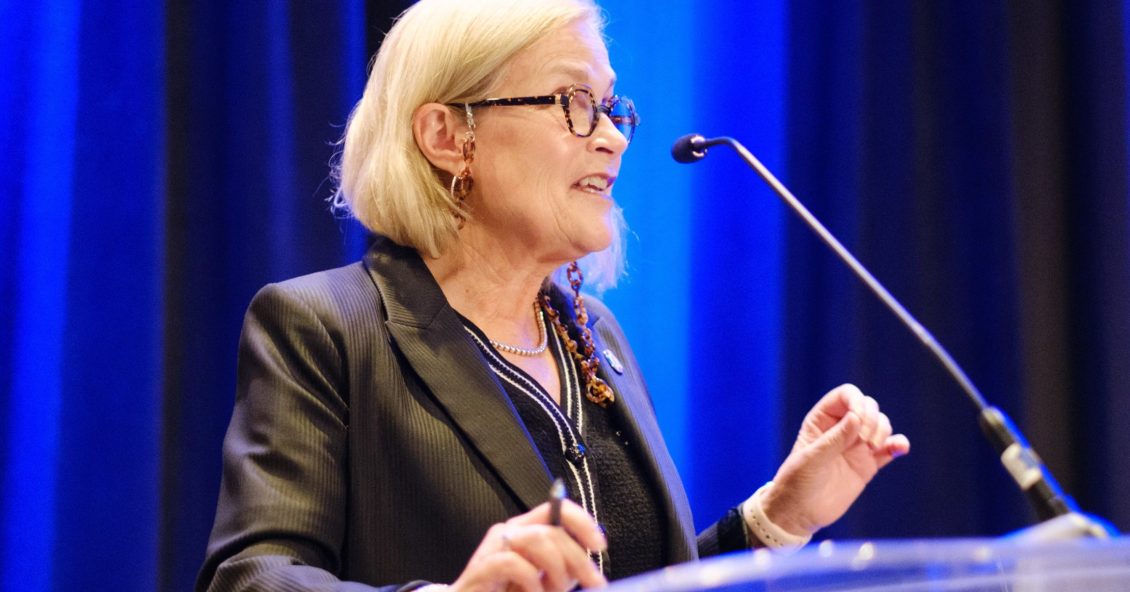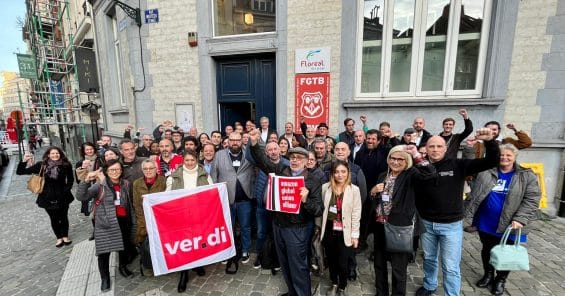UNI GS Hoffman: We must make it possible for all workers to bargain on technology through lowering the obstacles to unionization
17.11.23
UNI General Secretary Christy Hoffman gave a keynote address highlighting the need for workers to negotiate the impacts and implementation of AI as part of a wide-ranging day of discussion titled “AI and the Public Interest.”
The 15 November event, hosted by Open Markets Institute and the AI Now Institute in Washington, DC, weighed the promise, threats and regulatory challenges we face in our communities and workplaces after the advent of AI. It brought together leading policymakers, regulators, technologists, entrepreneurs, writers, musicians, policy experts, and academics from the United States and Europe.
Watch the speech, and the full day’s program here.
During her speech, Hoffman, put the concerns about AI’s use in the broader historical context of collective struggle over the introduction of new technologies at work. Since the dawn of the industrial revolution, workers have banded together to demand what we would call a “just transition” today.
The modern trade union movement began negotiating in earnest over technologies like robotics and automation in the 1970s, including in the jet engine factory where Hoffman was a negotiator in the 1980s. She noted the fights over technology today require the same muscles as those of decades past:
Our key demands were advance notice before implementation of technology, as well as the opportunity to address risks in the areas of jobs, health and safety, and training. We also pushed for a chance to offer suggestions for how to best implement new machines and tech, and those demands remain relevant today.
But longer term, we wanted to share in the advantages brought about by the new efficiencies. In fact, there were massive strikes in the auto industry over pay during this era in light of the fact that fewer workers were needed to build cars. And again, this the key issue we face with GenAI.
Hoffman pointed to the successes unions throughout the world have had installing guardrails on other types of workplace tech, including highly invasive algorithmic management. These programs typically drive-up productivity through constant monitoring and feedback that pushes people to work at unsafe and unsustainable rates.
Through both collective bargaining and regulatory frameworks which require social dialogue, the labour movement has been able to restrict the amount of workplace surveillance and how workers’ data can be used. Examples included a collective bargaining agreement between CWA and ATT in call centres, and an agreement between the works council and Amazon in Germany concerning individualized data.
Similarly, the emergence of GenAI last year holds promise of greater productivity, but unlike algorithmic management, these gains could be driven by automating tasks and augmenting workers’ abilities rather than just squeezing them to work harder. One of the only large studies on using GenAI at work covers call centres, where the technology help cut call times by 14 per cent and improved customer satisfaction, which in turn created a more pleasant experience for the call agent.
“That’s a good story and could mean less worker turnover and more stable employment,” Hoffman said. “But will workers be paid more since they are now able to answer more calls? Will the work become even more stressful because of speed up? These are open questions to be determined in large part by whether or not these workers can negotiate and some power at the bargaining table.”
The recent wins by entertainment unions, also demonstrate the power of collective action since these unions have been able to negotiate limits on AI so that the workers’ compensation and jobs are fully protected.
This outcome should be the model going forward. Hoffman concluded:
“The regulations of AI under discussion in the United States skirt the core issue, which is that it is too hard to create a union. Indeed, we need better protection for image rights and intellectual property. Surveillance should not be continuous, health and safety rules should be vigorously enforced. All workers should get breaks. But, most important, we must make it possible for all workers to bargain on technology through lowering the obstacles to unionization.
“Workers need real power to engage with their employers on technology as we have done for many decades in heavily organized sectors. We know how to do this. We just need to open the door.”
News


